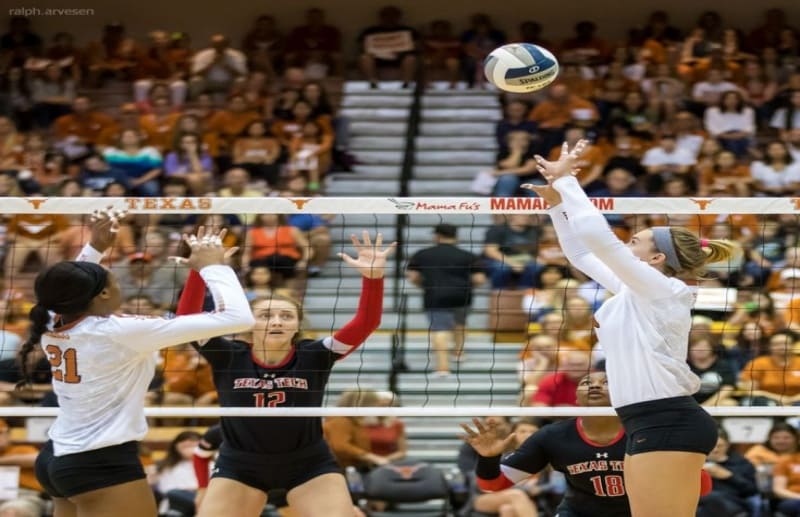Have you ever watched a game of volleyball and found yourself a little confused by the constant movement of players? You’re not alone.
As with all sports, each athlete on the court has a specific role. Understanding these positions is key to appreciating the strategic flow of the game.
In this quick guide, I’ll guide you through the different positions in volleyball, explaining their role and how they work together to score points.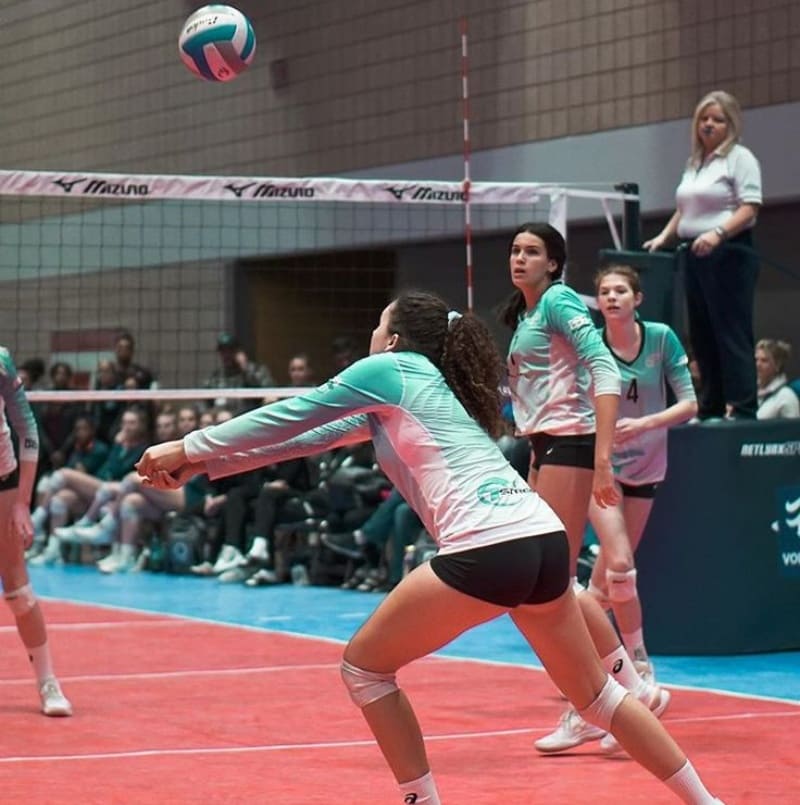
Image source: Pinterest
Volleyball Positions: An Overview
A typical volleyball lineup comprises six positions: liberos, defense specialists, setters, and three hitters. These positions are distributed between two zones: the front and back row, each containing three players.
Liberos, defense specialists, and setters occupy the back zone whereas the hitters often are positioned in the front row. Depending on their exact role, each player takes one of the six positions in the lineup.
Besides the players on the court, each team has four to eight substitute players depending on the competition.
A Closer Look at the Six Positions and Their Role in Volleyball
Like in any sport, every volleyball position provides unique value to the team with its varying responsibilities. In this section, you’ll explore the six positions in a volleyball lineup and how each serves the team:
Defensive Players
The defensive line in volleyball consists of the liberos and defensive specialists. The goal of both is to prevent the opposite team from scoring. They also need to be excellent passers as they receive serves and redirect them to setters.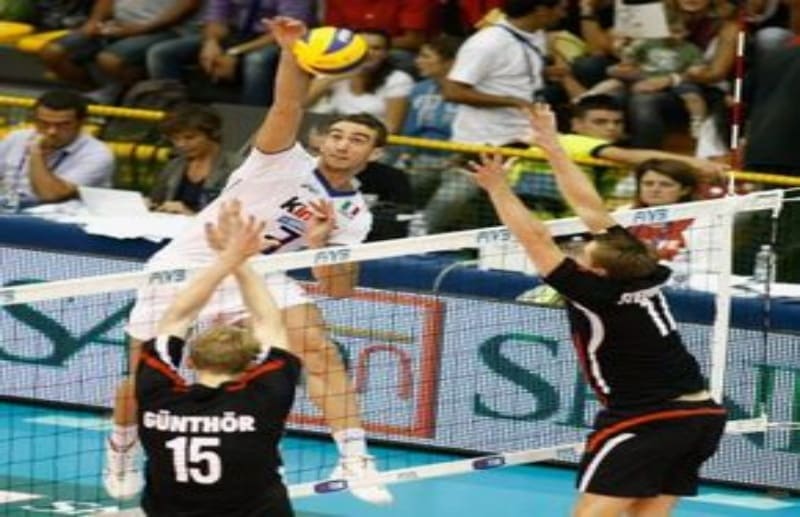
Image source: Pinterest
Let’s take a look at the two roles of defensive players:
Libero (L)
You can spot the libero among all volleyball players at first glance as their jersey differs from the rest of the team.
The libero is usually assigned position 5 in the left back, but they may stand in the middle back as well. It’s uncommon to see them maneuvering near the front row.
They’re responsible for receiving the opposite team’s serves, defense coverage, and digging. Once a libero gets the ball, they should direct it to setters to start an attack.
Defense Specialists (DS)
Defense specialists are usually assigned position 6 on the lineup. They’re responsible for defending their team alongside the liberos by preventing the ball from heading to the ground.
DSs most of the time get the first contact with the ball and they pass it to the setter who will then start a new attack. In addition, coaches often use DSs as a substitute for outside hitters.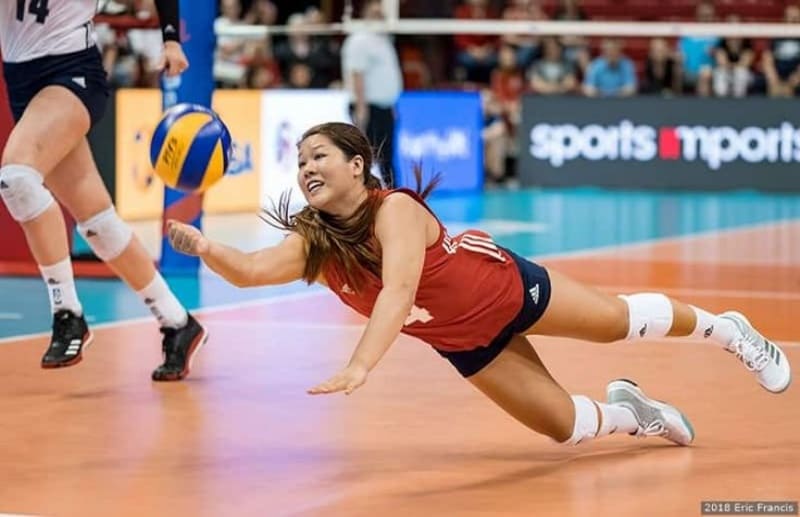
Image source: Pinterest
Setters (S)
Setters in a volleyball team are the players responsible for running the offense. They’re attack initiators and the players who touch the ball the most. Think of them as the strategists of the team. Some argue that the setter is the most difficult role in the game.
Those players are usually assigned position 1 on the lineup. They execute the second contact of the ball and redirect a pass (bump in volleyball) to one of the hitters. At this point, ideally, the hitter should hit the ball, scoring a point.
As such, setters need to be highly precise in their sets to increase the chances of the hitter to score.
Additionally, they need to be quick decision-makers, as they’ll start a lot of fast maneuvers. They should have analytical thinking skills to analyze the defensive strategy of their opponent team and penetrate it.
Although setters are the leaders of the offense, they sometimes participate with libero in defense.
Hitters
As you can easily guess, each volleyball team definitely needs hitters to execute offensive plays and score points. On that account, there are three positions for hitters in volleyball: outside, opposite, and middle hitters.
Let’s take a look at each of these volleyball positions:
Outside Hitters (OH)
An outside hitter is usually assigned position 4 on the lineup, which is the left front spot. Their primary responsibility is to hit the ball to score and help in blocking alongside the middle hitter.
Although there are three hitters, an outside hitter typically engages in more attacks than the other two. The reason is that outside hitters are open to the court, which makes them the easiest players for setters to set them to score.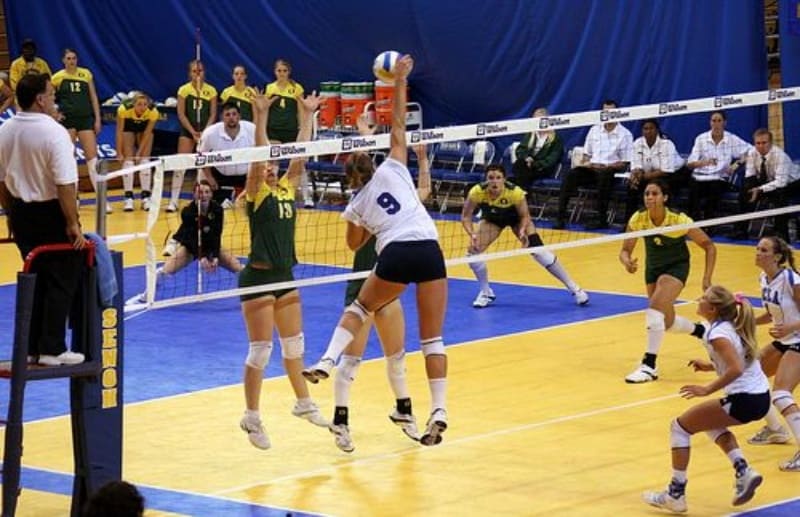
Image source: Pinterest
Middle Blocker (MB)
Middle hitters, also known as middle blockers, are usually the tallest players on the team. They’re stationed in spot 3 in the middle front of the lineup.
Setters are responsible for some of the team hits; the setter will set them for many attacks.
Despite being part of the offense line, middle blockers are vital defensive players as well. They’re responsible for blocking the opposite team’s hits.
With that in mind, for middle hitters to be exceptional blockers they need to read the setter of the opposite team and anticipate their maneuvers.
Opposite Hitters (OPP)
Opposite hitters, also referred to as right-side hitters, are the players positioned on the lineup’s right front spot. They’re mainly responsible for the team’s right-side hits.
Those hitters’ location on the court makes left-handed players the most suitable for this position as they’ll have an advantage in spiking from that angle.
Moreover, it’s recommended for these players to be tall as they work as blockers for the outside hitter of the opposite team.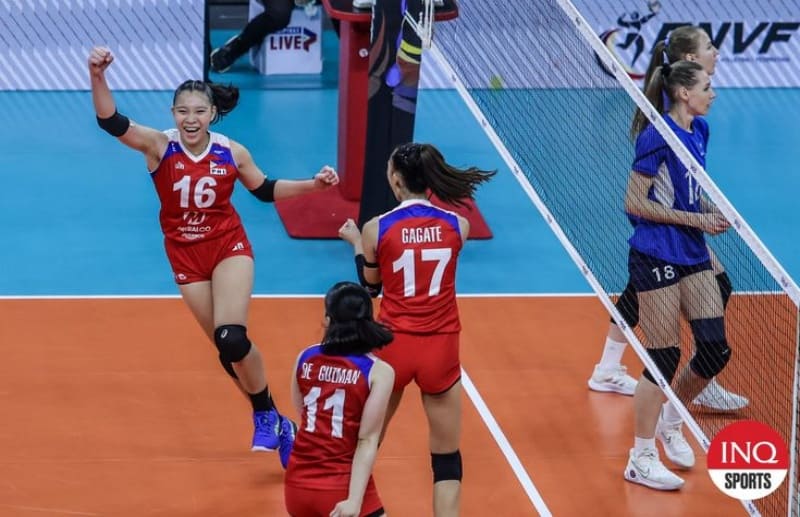
Image source: Pinterest
The Bottom Line
By now, you know the names of different volleyball player positions and the role of each. To sum it up, a libero’s role in volleyball is to defend their team and prevent the ball from hitting the ground on their side.
Defensive specialists also work on defending the team alongside liberos. Setters, on the other hand, orchestrate the team’s offense and start almost all the attacks. As for hitters, the outside hitter is the one that engages in the most attacks.
Opposite and middle hitters participate in the offense maneuvers but also have a defensive role by blocking other teams’ hits.
Hope you’ve enjoyed the article. If so, please share it with a friend who’s interested in exploring volleyball.

